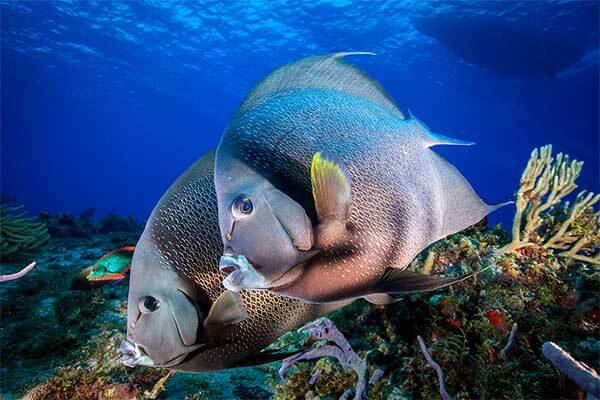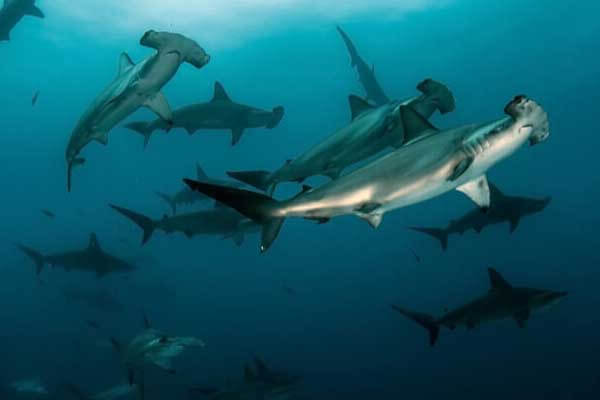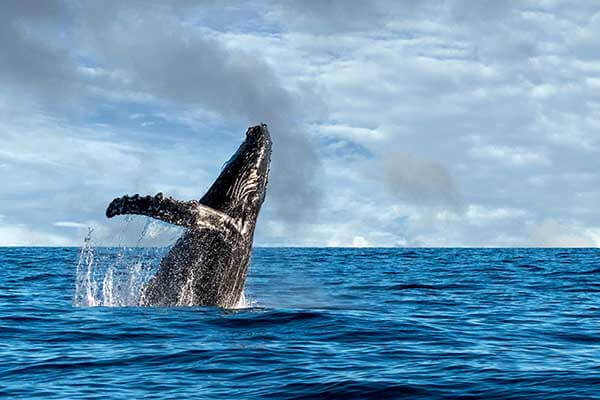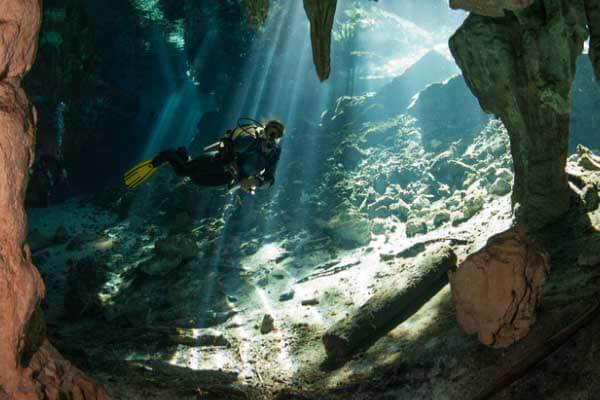
We have divided this guide into five main zones. Mexico is a vast country with more than 10,000km of coastline – but the following is a great way to start exploring its diving delights.
First the Sea of Cortez and Baja California in the north. The Sea of Cortez is a geological fluke – a sea sheltered by the second longest peninsula in the world (Baja California) and where tropical and temperate zones mingle to form a particularly bountiful marine ecosystem. Californian sea lions play year round and grey whales visit during their annual migration. Baja is the perfect place for a stunning road journey from Tijuana on the US border to the tip at Los Cabos stopping of for wonderful diving along the way.Californian sea lions play year round and grey whales visit during their annual migration. Baja is the perfect place for a stunning road journey from Tijuana on the US border to the tip at Los Cabos stopping of for wonderful diving along the way.
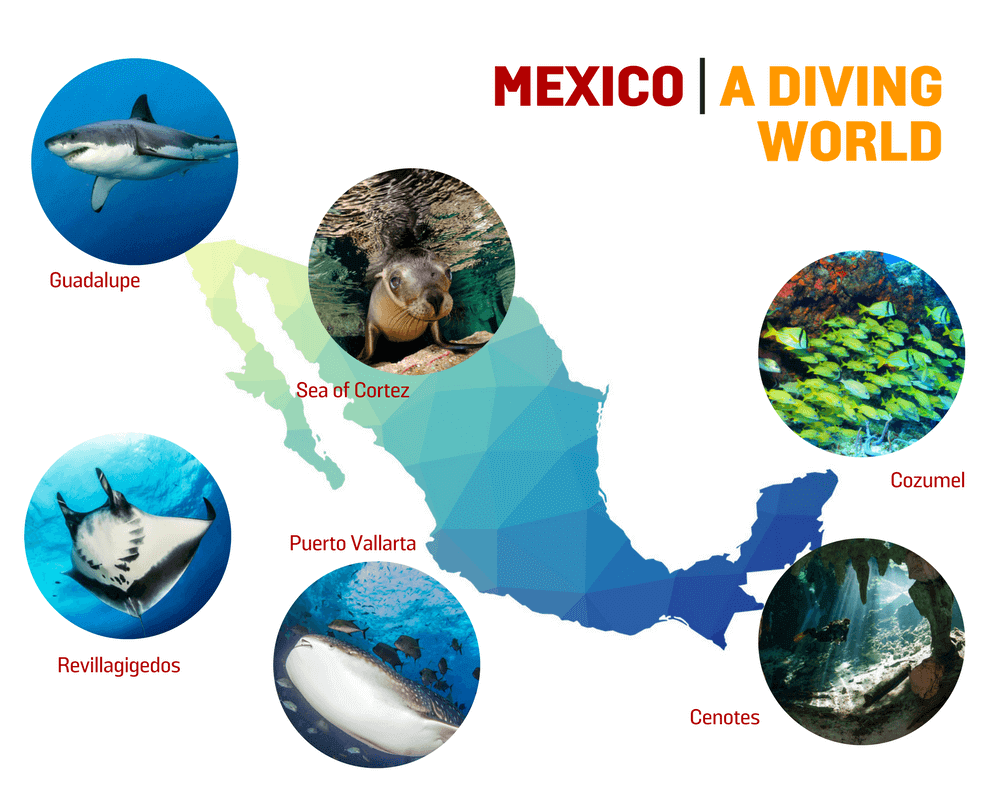
Baja California is also the jumping off point for liveaboard trips to our second zone – either that bucket list perennial of cave diving with great white sharks in the blue and clear water of Isla Guadalupe or to experience some of the best and most demanding diving on the planet around the rocky pinnacles of the Revillagigedos. Both are near the top of most divers’ wish lists.
Next, we look at the well-established resorts of the Central Pacific area – Puerto Vallarta and Acapulco. The perfect trip for those wishing to mix some good diving with a family holiday.
Away from the Pacific, we head to that top spot of Caribbean diving – Cozumel and the Rivera Maya. Great reefs, world-class encounters with whales sharks, bull sharks about to pup and speedy sailfish devouring bait balls. You could happily spend a lifetime of dive vacations exploring the maze of reefs around Cozumel with its well-oiled and first-class diving infrastructure. Holiday diving at its best.
But you can also combine such a trip with an experience all divers should try. Diving a cenote is unique. It is very different from coral reef diving and we have devoted a separate section to explain just how wonderful it is! And an Open Water certification allows you to get a real feel for ‘the darkness beyond’. If you get hooked there are plenty of extremely well-run dive centres offering cave diving courses.

GETTING THERE
There are a wide variety of flights from Europe to Mexico and a vast number from North America. If you are heading to Cozumel there are lots of options to fly direct to Cancun, both charter and major carriers. For Baja California, international flights got to La Paz, Loreto and San José del Cabo. There are direct international flights to the Central Pacific region landing at Puerto Vallarta and Acapulco.
Of course, you can always fly to Mexico City where there are extensive local flights and good luxury coach connections.
DIVING CONDITIONS
This is sub-tropical or tropical diving. Most of the time water temperatures in summer are a comfortable 25ºC to a nearly too warm 30ºC. In winter the water can dip to 15ºC in the northerly areas of Baja California, but in Cozumel it is unlikely to go below 24ºC even in in winter.
The diving off the Revillagigedos can be challenging with strong currents and surge – you are diving the tips of sunken mountains way out in the Pacific where oceans currents from north and south clash.
In the freshwater parts of the cenotes, temperatures can be a few degrees lower than the saltwater washing in from the Caribbean which makes the haloclines, where the two systems meet, even more pleasurable.
There is some shore diving in Cozumel and other areas, but for the most, part expect to be boat diving.
In some busy dive sites it is advisable to make a quick descent below prop levels. Also on ascent is it recommended to carry an SMB and to be vigilant on surfacing.
DIVE EQUIPMENT
Rental equipment is generally of a very high standard and a keen price – so you can avoid excess baggage charges. Do watch out for different allowances between local connections and international flights.
In summer 3mm full wetsuits or shorties will be fine. If you plan to spend a lot of time in the cenotes you may consider a thicker suit and hood.
What equipment you bring beyond your computer is a matter of personal choice – but we would recommend bringing a good small torch as rental options can be limited.
Hyperbaric chambers are available at both Cozumel and Playa Del Carmen and at Cabo San Lucas inBaja Mexico.
NEED TO KNOW
Weather

Summer temperatures on the Caribbean coast of between the high-20s and the mid-30s. Even in the winter months temperatures reach 28°C. Rainfall is a little higher between June and October, but still low – a maximum of 220mm in September. Hurricanes are rare but do occasionally hit between July and October. On the Pacific Coast high 20s to mid 30s all year but with higher rainfall between July to September – a max of 340mm in July.
Visas

If you’re visiting Mexico as a tourist from the EU, US and a number of other countries you don’t need a visa, but you do need a tourist card, which you can get free of charge on arrival by completing an immigration form available at border crossings or on-board flights to Mexico.
Phones

Local SIM cards are the most cost efficient means of using a mobile and can be bought easily at phone stores. As with Mexican landlines every Mexican SIM card has an area code. Important codes to remember: country code is 52; international dialling code is 00. Emergency number: dial 911.
Money

The currency in Mexico is the peso (MXN), divided into 100 centavos. Visa, MasterCard, Diners and American Express cards are widely accepted. ATMs are available in all but the smallest towns.
Language

The national language of Mexico is Spanish. However, many Mexicans speak English, especially in tourist areas.
Health

Recommended vaccinations for Mexico are typhoid and hepatitis A, although many people living in the UK will already have had these vaccinations. Yellow fever vaccination is required for travellers arriving from countries with risk of yellow fever transmission.
Transport

There is a well-connected internal transport system, with more than 60 cities with airports. The bus network is comprehensive, reasonably priced and offers several classes of travel. The road network is reasonably good, but do your research before you travel as there are toll roads. Car rental is relatively expensive when compared with Europe and the US
Electricity

Electricity supply: 127 volts/60Hz, which is incompatible with most UK appliances. If you travel to Mexico with a device that does not accept 127 volts at 60Hz, you will need a voltage converter. An American-style plug adapter is needed.
Time

Central zone (includes Yucatán): GMT -6 hours in winter and GMT -5 hours during daylight saving time (April to October)



